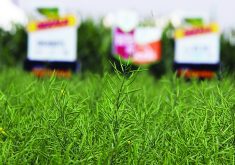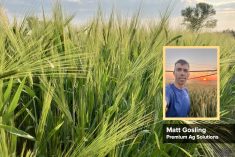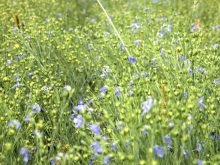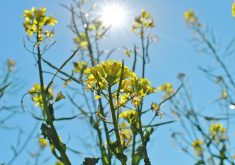Lethbridge-based Agriculture Canada researchers are stepping up their interest in soybeans as the crop’s popularity grows in Alberta.
Frank Larney and other scientists are examining row spacing, plant densities and nitrogen benefits that soybeans offer to the subsequent crop.
However, they have only one year of data from two sites and further research continues.
Early results indicate soybeans that mature in 116 to 121 days provide the best yields.
Varieties with 130 days to maturity risk frost damage in southern Alberta, Larney told farmers at the Agronomy Update in Lethbridge Jan. 18.
Read Also

Farming Smarter receives financial boost from Alberta government for potato research
Farming Smarter near Lethbridge got a boost to its research equipment, thanks to the Alberta government’s increase in funding for research associations.
Researchers have plots at Bow Island and Lethbridge, in which they planted two genotypes at 17.5 and 35 centimetre row spacings.
They also tested seeding densities of 30, 50 and 80 seeds per sq. metre.
Plant density, days to flowering, plant height at flowering, days to maturity, plant height at maturity and lowest pod height at maturity were all measured. So were pods per plant, seeds per plant, thousand seed weight, seed yield, straw yield and harvest index.
Larney said one year of data doesn’t yield conclusive results but his team found that narrow rows resulted in lower pod height than wider rows and narrow rows had more seeds per plant.
Soybeans planted at higher density matured slightly faster but not significantly so. Higher yields resulted from higher seeding density but researchers did not calculate whether the cost of extra seed was covered by the higher yield.
A second year of data has yet to be analyzed to see if early trends carry through.


















